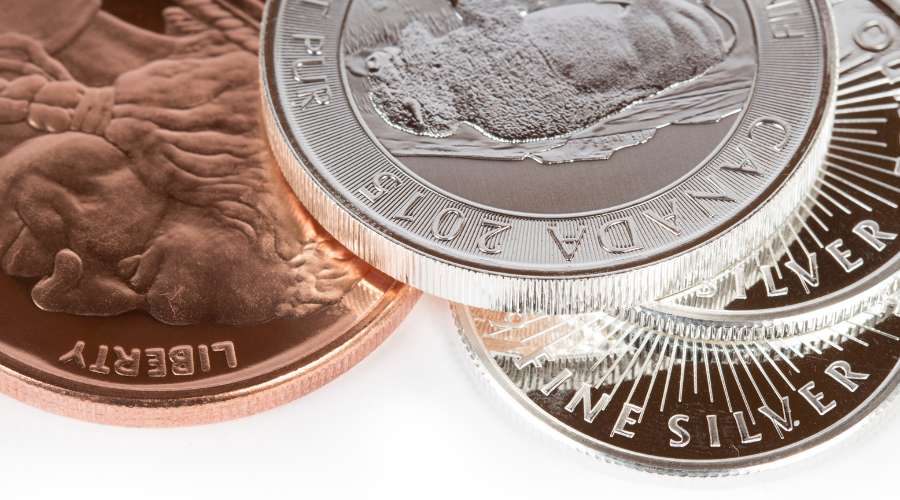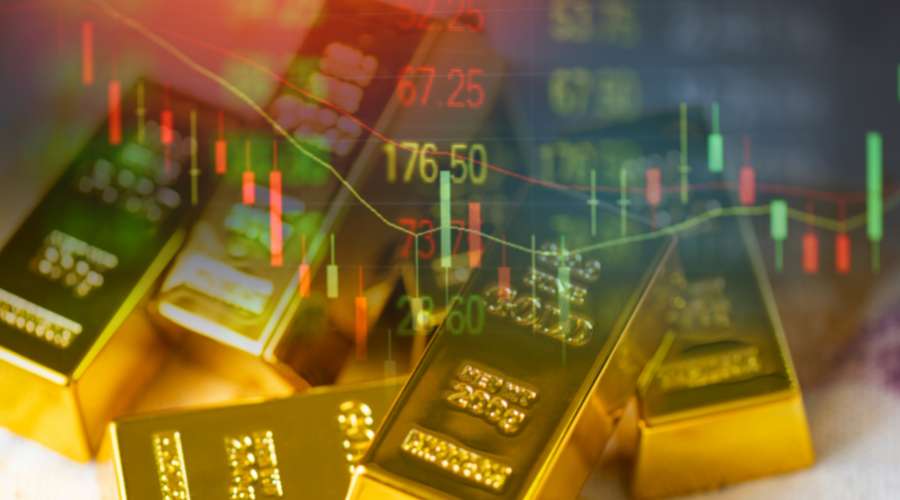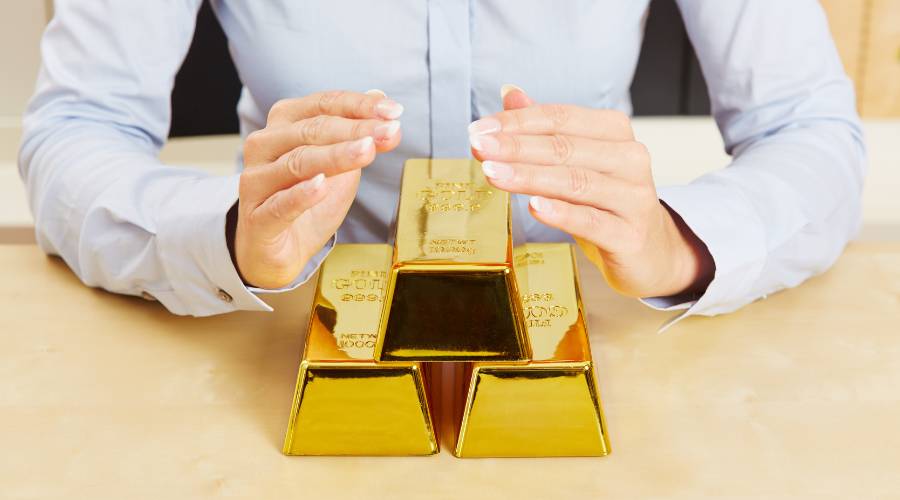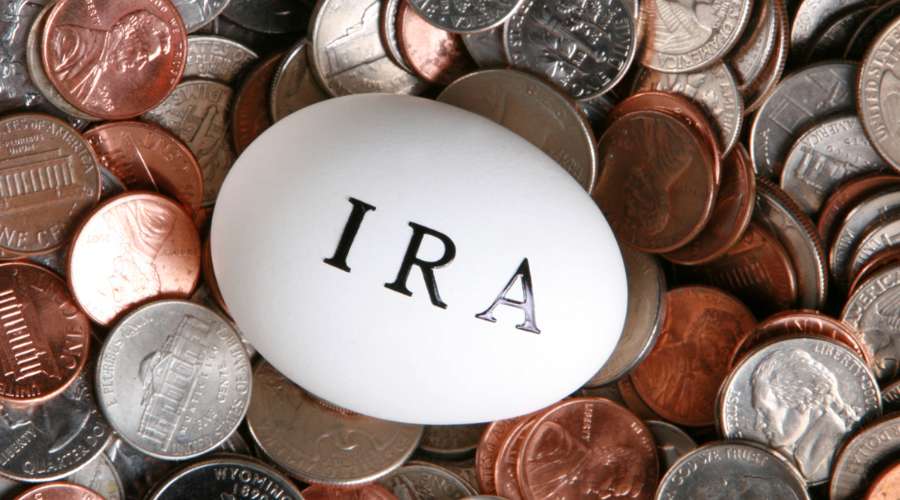Precious metals have long been considered valuable assets in any investor's portfolio. As the markets become more volatile and unpredictable, investing in precious metals can be a great way to diversify and protect your wealth. But how much of your portfolio should you allocate toward investing in precious metals? It can be difficult to know the right percentage for your situation.
To make sure you're making the best decision for your finances, it's important to understand the benefits of investing in precious metals, the different types of investments available, and how to decide on the right percentage to allocate to this portion of your portfolio.
With the right information and strategy, you can ensure your portfolio is well-positioned to take advantage of the potential benefits of investing in precious metals.
If you are interested in investing, make sure to take a look at our highest recommended companies for this year!
>> Click Here For A List Of The 5 Highest Recommended Precious Metals Investment Companies <<
An Overview of Precious Metals

Precious metals have a long and fascinating history. The earliest archaeological evidence of the use of precious metals dates back to ancient Egypt around 4000 BC. Precious metals were coveted for their beauty, durability, and rarity and were often used to craft jewelry and coins.
Gold is the most well-known precious metal used throughout human history for its unique properties. Gold is resistant to corrosion and highly malleable, making it perfect for intricate jewelry designs. Ancient civilizations used gold as a currency; today, it is still an important part of many economies.
Silver is another popular precious metal due to its affordability and its versatile uses. Silver is often used in coins, jewelry, and industrial applications. Silver has antibacterial properties and is used in many medical treatments. It is also used in electronics and photography.
Platinum is a rare metal that is prized for its strength and beauty. Platinum is difficult to work with, but when crafted correctly can create strong and stunning jewelry. Platinum is also used in the automotive and chemical industries due to its corrosion resistance.
Advantages of Investing in Precious Metals
Investing in precious metals like gold, silver, platinum and palladium can be a great way to diversify your portfolio and mitigate risk. Here are some of the top advantages of investing in these types of assets:
Value Preservation
Precious metals have long been known as a "haven" investment because their value is relatively stable over time, even during economic uncertainty. This means that your investments will retain their value, unlike other investments which can be extremely volatile and unpredictable.
Low Correlation to Traditional Asset Classes
Precious metals are specialty or alternative assets, meaning they do not correlate with traditional assets such as stocks and bonds. And since stocks and bonds are two of the most common asset classes used to diversify a portfolio, precious metals can help reduce overall portfolio risk.
Precious metals are typically less correlated with stocks than other commodities such as oil, natural gas, and agricultural commodities.
Hedge Against Economic Downturns and Inflation
Precious metals have historically performed well during periods of high inflation, as they often appreciate when inflation rises. When the price of goods and services (inflation) increases, precious metals usually also increase.
This is because precious metals are tangible assets, less likely to be used as a renewable energy source or converted into another product. So when inflation increases, the value of precious metals may also go up.
Precious metals can also serve as a hedge against economic downturns. When the economy is performing poorly, investors may shift to low-risk investments, such as government bonds, which can drive down their prices. Precious metals can be used as a hedge against economic downturns because they have historically had a low correlation to stocks and bonds.
Tangible Asset with Liquid Market
Precious metals can be acquired as coins, bars, or bullion. Precious metals have a readily available market and are traded on futures exchanges. There are also exchange-traded funds (ETFs) and mutual funds that invest in precious metals.
ETFs and mutual funds that invest in precious metals are sometimes considered unallocated, whereas coins, bars, and bullion are allocated precious metal investments. Precious metals can be an excellent long-term investment, as they can be easily converted into cash through an exchange or a broker.
Not Subject to Political and Economic Risks
Investors often use precious metals as a hedge against political and economic risks. Precious metals are not subject to political risks, such as changes in government regulations or policies that can negatively impact certain investments such as real estate or stocks.
And they are not subject to economic risk, such as changes in interest rates that can affect certain bonds and mortgages. Investors often use precious metals as a hedge against increases in interest rates, which can negatively impact bonds.
Diversification
Precious metals can be a valuable addition to a diversified portfolio of investments. They provide a different type of risk than other investments, such as stocks, bonds, and cash. Adding precious metals to a portfolio can help lower overall risk and provide a hedge against adverse economic and political developments.
When any given market is performing poorly, at least one other market is likely performing well. And vice versa. Adding precious metals to a portfolio can reduce the risk of having all their investment eggs in one basket.
What Percentage of Your Portfolio Should Be in Precious Metals?

It's always important to consider the percentage of your overall portfolio that should be allocated to precious metals investments. A good rule of thumb is to keep about 10-15% of your portfolio invested in precious metals as a hedge against market volatility and inflation. This diversification can provide some protection from downside risks that other asset classes may not offer.
Beyond basic diversification, the amount of your portfolio that should be allocated to precious metals also depends on your long-term investing goals and risk tolerance. Generally, younger investors with higher risk tolerance may want to invest more of their portfolio in precious metals. In comparison, older investors with lower risk tolerance may want to invest less in precious metals.
If you are looking for more aggressive returns, consider investing up to 20% of your portfolio in precious metals. On the other hand, if you are looking for more conservative returns and stability, you may want to consider investing no more than 5-10% of your portfolio in precious metals.
In addition to your risk tolerance and investing goals, you should consider the current economic environment when determining how much of your portfolio should be allocated to precious metals. During periods of high inflation or market volatility, allocate more of your portfolio to precious metals.
Also, consider allocating a portion of your portfolio to precious metals depending on your tax situation. Precious metals can sometimes offer tax advantages such as deferral or exclusion from taxation.
Ultimately, how much of your portfolio should be allocated to precious metals depends on your unique investment goals, risk tolerance, and the current economic environment. It is important to research and finds an allocation that works best for you.
How Do You Invest in Precious Metals?

Investing in precious metals can be an exciting and rewarding experience. There are several ways to invest in these valuable commodities, and it's important to understand the options available before taking the plunge.
Physical Metal
There are several different types of precious metals that you can invest in, including gold, silver, platinum and palladium.
When investing in precious physical metals, the most important thing to consider is the purity of the metal. Generally, gold and silver coins and bars should have a minimum purity of .999 fine. This means that the metal is 99.9% pure, which is the highest possible standard of purity for investment-grade precious metals.
In addition to purity, you also want to look at the weight and size of the coins or bars you buy. Coins are typically sold based on weight, while bars are usually sold based on size. Generally, the larger the coin or bar, the lower the premium you will pay.
Another factor to consider when investing in physical precious metals is the storage of the metal. You can either choose to store it yourself using a third-party storage service. If you decide to store the metal yourself, ensure it is stored securely and always keep an eye on its value.
Finally, if you decide to buy physical precious metals, make sure to do your research and buy from a reputable dealer. Make sure to read reviews and ask questions before making any purchases.
Mining Stocks
Mining stocks are shares of companies specializing in the exploration, extraction, and production of precious metals. When you invest in one of these companies, you're betting on their success as they look for new sources of valuable minerals. If the company finds a vein of gold or silver, your investment could rise substantially.
When choosing which mining stocks to invest in, it's important to do your research. Look into the company's management team, the quality of their assets, and the history of their success. You'll also want to consider the size of the company, its market capitalization, and the risks associated with the sector.
It's also wise to diversify your investments across precious metals and companies. This helps to spread out your risk and can reduce the impact of volatility in any one sector.
Mutual Funds
Mutual funds are baskets of investments that typically hold stocks, bonds, and other securities. When you invest in a precious metals mutual fund, you're investing in various precious metals, including gold, silver, platinum, and palladium.
The benefits of investing in a mutual fund are that you can purchase various precious metals rather than just one type. This helps to diversify your portfolio so that if one type of metal decreases in value, you won't be as affected by it. Mutual funds also allow for smaller investments, making them more accessible for those with limited funds.
Exchange-Traded Funds (ETFs)
Exchange-traded funds (ETFs) are one of the most popular ways to invest in precious metals. ETFs allow you to invest in a basket of stocks or commodities without purchasing individual assets.
You have three main options when investing in ETFs that track precious metals. The first option is to purchase shares of a physically-backed ETF, which means that the fund holds physical gold, silver, or other precious metals. These funds typically track the metal's spot price, meaning that any gains or losses in the value of the metal will be reflected in the ETF's share price.
The second option is to purchase shares of a futures-based ETF. These ETFs do not hold a physical commodity but rather track the price of a futures contract on the underlying commodity. These ETFs can be more volatile than physically backed ETFs since futures prices can move quickly due to factors such as supply and demand.
The third option is to purchase shares of an ETN, which stands for exchange-traded note. ETNs are debt securities issued by investment banks and track the performance of an index or other benchmark. ETNs do not hold precious physical metals but provide exposure to the underlying commodity.
Futures Contracts
When investing in precious metal futures, you are entering into a contract to buy or sell a certain amount of a particular metal at a predetermined price and date. You can invest in precious metal futures contracts through a futures broker, who will help you choose the right contracts for your investment goals.
When selecting a precious metal futures contract, you should consider its expiration date, the size of the contract, the underlying metal, and the margin requirement.
The expiration date specifies when the contract must be settled, the size of the contract tells you how much of the metal you will purchase or sell, and the underlying metal is the type of metal you will invest in. The margin requirement is the amount of money you must deposit to cover potential losses.
Gold IRA: The Best Gold Investment Option

Gold IRA is a self-directed Individual Retirement Account (IRA) that allows you to invest in physical gold, silver, platinum and palladium. As a self-directed IRA, you can choose which assets you want to add to your portfolio.
Gold IRAs are tax-advantaged investments, meaning your profits and gains are not subject to taxes as long as they remain within the account. This makes gold an attractive asset because it can help you grow your retirement savings while avoiding the costly tax implications.
Gold IRAs come in three different types:
No matter the type of gold IRA you choose, you'll take advantage of the potential benefits of owning physical gold. Gold has long been considered a safe-haven asset, and with a gold IRA, you can enjoy the potential of gold as part of your retirement savings.
How to Get Started with a Gold IRA
Getting started with a gold IRA is an exciting and rewarding financial move. Getting started can be overwhelming, but don't worry - it's easier than you think! Here's a step-by-step guide to getting your gold IRA up and running:
When Can You Withdraw from a Gold IRA?
You can withdraw from a gold IRA anytime, as long as you meet the rules and regulations set by the Internal Revenue Service (IRS). To withdraw, you must first be at least 59 ½ years of age or have had your account for at least five years.
You must also have an eligible distribution event, such as retirement, death, disability, or separation from service.
When you withdraw, you typically have three options: a lump sum payment, periodic payments, or by rolling the funds into another qualified retirement plan. The IRS requires that you pay taxes on any amount you withdraw that is over your initial contribution. It also requires you to pay a 10 percent penalty if you are not 59 ½ years old yet and make an early withdrawal.
Final Thoughts
When deciding how much of your portfolio should be in precious metals, consider your investment goals, risk tolerance, and the current economic environment. Generally, most experts recommend that 5%-15% of your portfolio be in precious metals. The exact amount will depend on the individual investor and their situation.
One of the easiest and most secure ways to invest in gold is through a Gold IRA. With a Gold IRA, you can invest in physical gold, silver, platinum and palladium as part of your retirement savings plan. Gold IRAs are a great way to diversify your portfolio and protect your investments from market turbulence.
We highly recommend using our recommended gold IRA companies to assist you with setting up and managing your gold IRA. Our recommended gold IRA companies have decades of experience in the industry and offer expert advice and support throughout the entire process.
No matter what your investment goals are, investing in precious metals is a great way to diversify your portfolio and protect your investments from market volatility. With the help of our recommended gold IRA companies, you can easily and securely invest in gold as part of your retirement savings plan.
Don't forget to check out our top recommended companies before investing!
